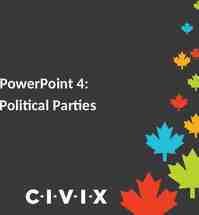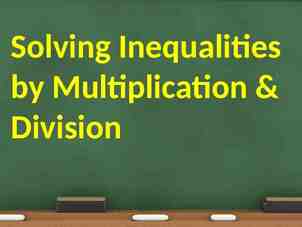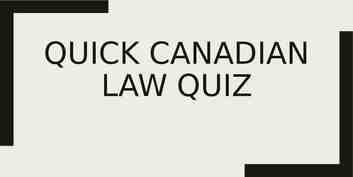Management Information Systems Jane P. Laudon Kenneth C. Laudon
67 Slides1.40 MB
Management Information Systems Jane P. Laudon Kenneth C. Laudon Prentice-Hall Inc 10th edition
Chapter 1 Information Systems in Global Business Today
Management Information Systems Chapter 1 Information Systems in Global Business Today The Role of Information Systems in Business Today Information meaningful data (facts) Societies mainly depend on the information Information support to achieve desired objectives Planning, organizing, decision making, IS process (handle) the data to be useful information Through H/W, S/W, telecommunication, DB IS computer systems related to process data and provide required information ATMs, airline reservation systems, course reservation systems Data Process Information
business process Business process : tasks, rules, behaviors that been developed to produce business results. eg. – Developing new product – Creating market plan – Hiring an employee Considered source of competitive strength IS automate many business process
Definitions Data Information System Information system Business Business process
Role of IS in business today IS transform (improve) business today. How? 1. Creating globalization opportunities: Internet reduced costs of operating, on global scale for Customers and firms, Using foreign markets, easily replicate service such as Google and ebay 2. Helps the emerging digital firm: The business relationships in digital firm are digitally enabled and mediated and It’s core business processes are accomplished through digital networks. (Time shifting, space shifting)
Firms invest heavily in IS to achieve 6 strategic business objectives (why firms use IS?). 1. Operational excellence 2. New products, services, and business models 3. Customer and supplier intimacy 4. Improved decision making 5. Competitive advantage 6. Survival
1. Operational excellence: IS Improvement of efficiency of operation to attain higher profitability IT tool to achieve greater efficiency and productivity Examble: Wal-Mart’s RetailLink system links suppliers to stores for superior replenishment system
2. New products, services, and business models – Business model: describes how company produces, delivers, and sells product or service to create wealth – Information systems and technology a major enabling tool for new products, services, business models E.g. Apple’s iPod, iTunes and Netflix’s Internetbased DVD rentals
3. Customer and supplier intimacy – Serving customers well leads to customers returning, which raises revenues and profits E.g. High-end hotels that use computers to track customer preferences and use to monitor and customize environment – Intimacy with suppliers allows them to provide vital inputs, which lowers costs E.g. J.C.Penney’s information system which links sales records to contract manufacturer
4. Improved decision-making – Without accurate information: Managers must use forecasts, best guesses, luck Leads to: – Overproduction, underproduction of goods and services – Misallocation of resources – Poor response times Poor outcomes raise costs, lose customers – IS provide real-time data for making decisions – E.g. Verizon’s Web-based digital dashboard to provide managers with real-time data on customer complaints, network performance, line outages, etc.
5. Competitive advantage – Achieve higher sales and profit through using IS by: Doing things better Charging less for superior products real time Responding – Using the internet is competitive advantage – E.g. Dell: Consistent profitability over 25 years; Dell remains one of the most efficient producer of PCs in world. – But Dell has lost some of its advantages to fast followers-- HP
6. Survival – Information technologies are necessity of doing business – May be: Industry-level changes, e.g. Citibank’s introduction of ATMs Governmental regulations requiring record-keeping – E.g. Toxic Substances Control Act, Sarbannes-Oxley Act
IS, data, information IS – Set of interrelated components – Collect, process, store, and distribute information By computers and software as a tool – Support decision making, coordination, control, problem analysis and create new product – Provide solutions to challenges in business Env. Information vs. data – Data are streams of raw facts – Information is data shaped into meaningful form
IS: input, process, output, feedback IS: activities produce required information – Input: Captures raw data from organization or external environment – Processing: Converts data into meaningful form – Output: Transfers processed information to people or activities that use it – Feedback: Output returned to appropriate members of organization to help evaluate or correct input stage
Management Information Systems Chapter 1 Information Systems in Global Business Today Perspectives on Information Systems Functions of an Information System An information system contains information about an organization and its surrounding environment. Three basic activities—input, processing, and output— produce the information organizations need. Feedback is output returned to appropriate people or activities in the organization to evaluate and refine the input. Environmental actors, such as customers, suppliers, competitors, stockholders, and regulatory agencies, interact with the organization and its information systems. Figure 1-4
Computer/Computer program vs. information system – Computers and software are technical foundation and tools to store and process information – similar to the material and tools used to build a house – Cannot produce required information to a particular organization
Dimensions (boarders) of IS – Understanding of IS dimensions is IS literacy – Where computer literacy is focus on primarily on knowledge of IT – MIS try to achieve this boarders, deals with behavioral and technical issues surrounding development, use and impact of IS in the firm.
1. Organizational dimension of IS – structure: different levels and specialties hierarchy of authority, responsibility: Senior Middle Operational management, Knowledge service Data workers – business process: Organization coordinate its work through its hierarchy and business process – Culture : ways of doing things, part is embedded in IS.
Levels in a Firm Figure 1-6
2. Management dimension – – – Make decisions, formulate action plan and solve organizational problem Managers set organizational strategy for responding to business challenges In addition, managers must act creatively: Creation of new products and services Occasionally re-creating the organization
3. Technology dimension IT is: – Hardware: physical component – Software: instruction control Hardware – Data management technology – Network and telecommunications technology – Network: Hardware Software link computers – Internet: Network to provide services – WWW: service to store retrieve information IT infrastructure: platform that the firm can built on its IS
Business perspective on IS: – IS instrument for creating value to firms – Investments in IS result in superior returns: Increases productivity and revenue – IS provides information that helps managers making better decisions and improve the execution of business process – Value of IS
There variation in Returns on Information Technology Investment Investing in information technology does not guarantee good returns Considerable variation in the returns firms receive from systems investments Factors that case The variation in Returns : – Adopting right business model according (suite) to new technology – complementary investments (business processes, models, management behavior and culture)
Complementary assets: – Assets required to derive value from a primary investment – Firms supporting their technology investments with investment in complementary assets receive superior returns – E.g.: invest in technology and the people to make it work properly
Contemporary Approaches to Information Systems
Technical approach: Emphasizes mathematically based models Computer science theories of commutation ,data storage management science: models of DM and practices operations research: optimizing selected parameters of org.
Behavioral approach : Behavioral issues such strategic business integration, implementation. Psychology: how decision makers use formal information Economics: how IS change the control and cost structures Sociology: how system affect individuals and groups
Management Information Systems MIS Use of computer-based information systems in business firms Combines work of CS, management, and operating research toward developing system solutions to real word problems Concerned with behavioral issues of development, use and impact of IS main actors : Suppliers of hardware and software, Business firms, Managers and employees, Firm’s environment (legal, social, cultural context)
Chapter 2 Global E-Business: How Businesses Use Information Systems
Definitions Business processes: Workflows of material, information, knowledge Sets of activities, steps May be tied to functional area or be crossfunctional Businesses: Can be seen as collection of business processes Business processes may be assets or liabilities
Information technology and business processes Information technology enhances business processes in two main ways: Increasing efficiency of existing processes Automating steps that were manual Enabling entirely new processes that are capable of transforming the businesses Change flow of information Replace sequential steps with parallel steps Eliminate delays in decision making
functional business processes Examples : – Manufacturing and production Assembling the product – Sales and marketing Identifying customers – Finance and accounting Creating financial statements – Human resources Hiring employees
Sales and marketing systems – Functional concerns include: Sales management, customer identification market research, advertising and promotion, pricing, new products – Examples of systems: Order processing (operational level) Pricing analysis (middle mgmt) Sales trend forecasting (senior mgmt)
Manufacturing and production systems – Functional concerns include: Managing production facilities, production goals, production materials, and scheduling – Examples of systems: Machine control (operational mgmt) Production planning (middle mgmt) Facilities location (senior mgmt)
Finance and accounting systems – Functional concerns include: Managing financial assets (cash, stocks, etc.) and capitalization of firm, and managing firm’s financial records – Examples of systems: Accounts receivable (operational mgmt) Budgeting (middle mgmt) Profit planning (senior mgmt)
Human resource systems – Functional concerns include: Identifying potential employees, maintaining employee records, creating programs to develop employee talent and skills – Examples of systems: Training and development (operational mgmt) Compensation analysis (middle mgmt) Human resources planning (senior mgmt)
Systems from a constituency perspective – Transaction processing systems: supporting operational level employees – Management information systems and decision-support systems: supporting managers – Executive support systems: supporting executives
Transaction processing systems – Perform and record daily routine transactions necessary to conduct business E.g. sales order entry, payroll, shipping – Allow managers to monitor status of operations and relations with external environment – Serve operational levels – Serve predefined, structured goals and decision making
Management information systems – Serve middle management – Provide reports on firm’s current performance, based on data from TPS – Provide answers to routine questions with predefined procedure for answering them – Typically have little analytic capability
Decision support systems – Serve middle management – Support nonroutine decision making E.g. What is impact on production schedule if December sales doubled? – Often use external information as well from TPS and MIS – Model driven DSS Voyage-estimating systems – Data driven DSS Intrawest’s marketing analysis systems
Executive support systems – Support senior management – Address nonroutine decisions requiring judgment, evaluation, and insight – Incorporate data about external events (e.g. new tax laws or competitors) as well as summarized information from internal MIS and DSS – E.g. ESS that provides minute-to-minute view of firm’s financial performance as measured by working capital, accounts receivable, accounts payable, cash flow, and inventory.
Relationship of systems to one another – TPS: Major source of data for other systems – ESS: Recipient of data from lower-level systems – Data may be exchanged between systems – In reality, most businesses’ systems only loosely integrated
Interrelationships Among Systems The various types of systems in the organization have interdependencies. TPS are major producers of information that is required by many other systems in the firm, which, in turn, produce information for other systems. These different types of systems are loosely coupled in most business firms, but increasingly firms are using new technologies to integrate information that resides in many different systems. Figure 2-10
Problem: Different kinds if IS in a firm work together The challenge to get them all work together as one corporate system(information integration ) Solution: applications (systems) that span functional areas, focus on: Execute, coordinate business process Integrate group of process Focus on management of resources and customer service
Solution: Enterprise applications Include all levels of management Execute business processes across firm Span functional areas Types – – – – Enterprise systems (ERP) Supply chain management systems Customer relationship management systems: Knowledge management systems KMS
Enterprise systems (ERP) Collects data from different firm functions and stores data in single central data repository to be shared among firm Resolves problem of fragmented, redundant data sets and systems Enable: Coordination of daily activities Efficient response to customer orders (production, inventory) Provide valuable information for improving management decision making
Supply chain management systems Manage firm’s relationships with suppliers Share information about Orders, production, inventory levels, delivery of products and services Goal: Right amount of products to destination with least amount of time and lowest cost Inaccurate info: excessive inventories; inaccurate manufacturing plans; missed production schedule; raise cost less satisfaction
Customer relationship management systems: Provide information to coordinate all of the business processes that deal with customers in sales, marketing, and service to optimize revenue, customer satisfaction, and customer retention. Integrate firm’s customer-related processes and support customer information from multiple communication channels (tel., email, WiFi devices)
Knowledge management systems KMS Knowledge and experience on how to create produce and deliver products and services Collect Knowledge and experience and make available whenever and wherever KMS Support processes for acquiring, creating, storing, distributing, applying, integrating knowledge, link internal knowledge to external knowledge Include enterprise-wide systems for: Managing documents, graphics and other digital knowledge objects; Directories of employees with expertise
Intranets and Extranets: Measure of information integration in firm Technology platforms (network) more than application Tools are used to increase integration and expedite (speed) the flow of information within the firm
E-business, E-government E-business (Electronic business): Use of digital technology and Internet to execute major business processes in the enterprise Includes e-commerce (electronic commerce): Buying and selling of goods over Internet E-government: The application of Internet and networking technologies to digitally enable government and public sector agencies’ relationships with citizens, businesses, and other arms of government
Chapter 3 Information Systems, Organizations, and Strategy
Organization IT and organizations influence one another Complex relationship influenced by: organization’s structure: business processes: Politics: culture: Environment: management decisions:
What is an organization? Technical definition: Stable, formal social structure that takes resources from environment and processes them to produce outputs A formal legal entity with internal rules and procedures, as well as a social structure Behavioral definition: A collection of rights, privileges, obligations, and responsibilities that is delicately balanced over a period of time through conflict and conflict resolution
Features of organizations Use of hierarchical structure, authority in decision making Hire and promote employees based on qualifications Adherence to principle of efficiency (maximize output) Other features : Routines and business processes, politics, culture, environments and structures.
Routines and business processes Routines (standard operating procedures) Precise rules, procedures, and practices developed to cope with virtually all expected situations Business processes: Collections of routines Business firm: Collection of business processes
Organizational politics, culture and environment Organizational politics: Viewpoints about how resources, rewards and punishments should be distributed ,Politics may defeat plans for an IS Organizational culture: Encompasses set of assumptions that define goal and product What products the organization should produce How and where it should be produced For whom the products should be produced May be powerful unifying force as well as restraint on change Organizational environments: Organizations can influence their environments Environments generally change faster than organizations IS can be instrument of environmental scanning, act as a lens
Organizational structure Structure is shape, 5 kinds (table 3-1): Entrepreneurial: Small start-up business Machine bureaucracy: Midsize manufacturing firm Divisionalized bureaucracy: Fortune 500 firms Professional bureaucracy: Law firms, school systems, hospitals Adhocracy: Consulting firms
Other Organizational Features Have Goals, to be achieved – coercive: prisons; Utilitarian: businesses; Normative: colleges Constituencies: serve different groups Leadership styles : democratic or authoritarian Tasks and technology (routine and nonroutine )
How IS Impact Organizations and Business Firms Economic impacts Organizational and behavioral impacts
Economic impacts IT changes relative costs of capital and costs of information reduce number and replace the function of more middle managers, reduce the need for other forms of capital (buildings, machinery). IT helps firms contract in size: it can reduce transaction costs (the cost of participating in markets); Outsourcing IS technology is a factor of production, like capital & labor IT affects the cost and quality of information and changes economics of information
Transaction cost theory Firms seek to economize on cost of participating in market (transaction costs) Production vs. transaction cost IT lowers market transaction costs for firm, making it worthwhile for firms to transact with other firms rather than grow the number of employees. With the Internet, firms mind it more cost effective to use the marketplace and contract for work in a market, rather than hire employees.
Agency theory Firm is nexus of contracts among self-interested parties requiring supervision Firms experience agency costs (the cost of managing and supervising) which rise as firm grows IT can reduce agency costs, making it possible for firms to grow without adding to the costs of supervising, and without adding employees
Organizational and behavioral impacts IT flattens organizations Decision making pushed to lower levels Fewer managers needed (IT enables faster decision making and increases span of control) Postindustrial organizations Organizations flatten because in postindustrial societies, authority increasingly relies on knowledge and competence rather than formal positions
Organizational resistance to change Information systems become bound up in organizational politics because they influence access to a key resource ( the information) Information systems potentially change an organization’s structure, culture, politics, and work Most common reason for failure of large projects is due to organizational and political resistance to change. workers may resist changes that disrupt their routines so IS cannot implemented








































































